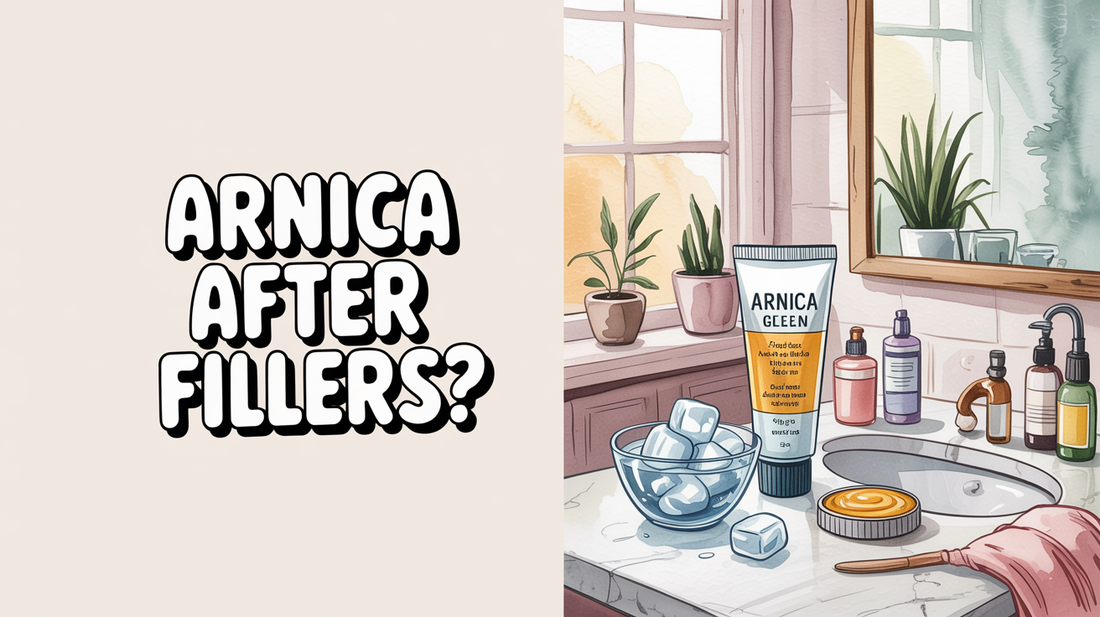Does arnica help after lip fillers?
Considering lip fillers? Many seek options for effective post-procedure healing and cosmetic recovery. Arnica has become a favored choice for those looking to ease the journey after cosmetic treatments, including lip fillers. In this post, we'll explore how Jane Vine Arnica Gel can support your healing process through three main sections.
Arnica for Cosmetic Procedures
Derived from the Arnica montana plant, arnica has found its way into the cosmetic medicine field for managing post-procedure symptoms. Many practitioners and patients have reported positive experiences using it after minimally invasive treatments, such as lip fillers. This homeopathic remedy is available in various forms, including topical gels, oral pellets, and creams, making it accessible for pre and post-treatment use.
While the scientific backing may be limited, arnica is often recommended by cosmetic surgeons and dermatologists as part of their protocols. When used as directed, it is generally considered safe with minimal side effects, which makes it a gentle option for many individuals.
- Available in topical gels, creams, and oral forms.
- May help reduce inflammation and promote blood circulation.
- Widely recommended by cosmetic professionals.
- Safety profile is favorable for most users.
- Can be found over-the-counter without prescriptions.
Try It Tonight: Eye & Skin Refresh ✨
- Remove makeup and cleanse gently with lukewarm water.
- Apply a cool compress or take a few deep breaths to relax facial tension.
- Lightly dab a pea-sized amount of Jane Vine Arnica Gel under eyes or on areas of concern. Always patch-test first if you’re new to arnica-based skincare.
Healing Benefits
Many appreciate arnica for its potential soothing and anti-inflammatory properties, particularly after cosmetic procedures. While clinical evidence is mixed, some users report that it may help alleviate common post-filler symptoms like swelling, bruising, and discomfort.
For instance, some individuals have found that arnica can help reduce swelling and inflammation at injection sites, which might lead to quicker resolution of puffiness. Additionally, it could minimize bruising severity and duration, potentially supporting healthier circulation in treated areas.
- May help lessen swelling at injection sites.
- Could reduce the severity and duration of bruising.
- Might provide gentle comfort during the initial healing phase.
- Some users note faster healing times with consistent use.
- May help preserve a natural look by minimizing inflammation.
Why We Recommend a Gentle Helper 🌿
Jane Vine Arnica Gel is crafted for quick absorption and offers a lightweight, soothing feel. It may support a calm recovery routine and help diminish the appearance of puffiness and skin stress over time.
- Fast-absorbing comfort—no greasy residue.
- Gentle, cooling sensation designed for delicate skin.
- Clean, naturally inspired formula with a fresh finish.
Tips for Aftercare 🔍
Effective aftercare is essential following lip filler treatments to ensure optimal healing results. Incorporating arnica can be a valuable part of a comprehensive recovery plan alongside other recommended practices.
For best results, consider starting your arnica treatment 2-3 days before the procedure and continuing for 5-7 days after. Gently applying the topical gel 2-3 times daily can be beneficial, while also combining its use with ice applications during the first couple of days to help manage swelling.
- Begin arnica treatment 2-3 days prior to your fillers.
- Apply gently to the treated areas 2-3 times daily.
- Combine with ice applications for swelling management.
- Avoid alcohol and strenuous activities post-treatment.
- Consult your practitioner if unusual symptoms occur.

